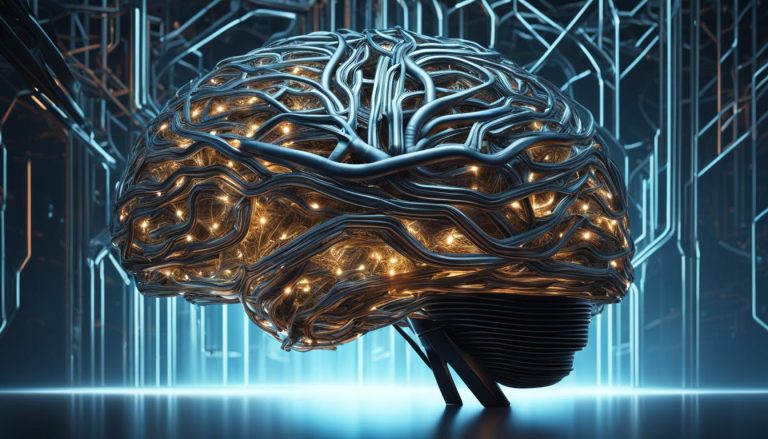The field of natural language processing (NLP) has been revolutionized by the emergence of Transformer models. Introduced in 2017, these models have exceeded the capabilities of traditional RNNs and LSTMs, transforming AI and language processing capabilities.
Unlike RNNs and LSTMs, Transformer models can effectively process long sequence data, making them the go-to model for current NLP tasks. Their self-attention mechanism, positional encoding, and encoder-decoder architecture are key components driving their success in sequence modeling.
Transformer models are recognized for their ability to dynamically focus on different parts of a sequence, maintaining positional awareness while processing. This innovation, coupled with parallel processing capability and scalability, sets them apart from traditional models.
Transformer models have established themselves as a game-changer in AI and language processing. With their revolutionary approach to handling long-distance dependencies and sequence data, they have surpassed the limitations of RNNs and LSTMs, providing more efficient and accurate solutions for NLP tasks.
As we delve further into the world of sequence modeling, Transformer models, along with other noteworthy models like GPT and BERT, have set the bar high. These advancements open doors for increased specialization, improved performance, and enhanced efficiency in various domains. Their impact transcends text and image data, with emerging models like NeRF paving the way for advancements in 3D environment understanding and generation.
By keeping abreast of these developments, we can continue pushing the boundaries of what is possible in machine learning and capitalize on the transformative potential of Transformer models.
Overview of the Transformer Model
The Transformer model, introduced in the 2017 paper “Attention is All You Need,” revolutionized natural language processing (NLP). Unlike traditional models such as recurrent neural networks (RNNs) and long short-term memory (LSTM) networks, the Transformer model completely abandoned the recurrent structure in favor of the attention mechanism. This innovative approach allows the model to consider the entire sequence when processing each element, capturing complex dependencies within the text.
One of the key strengths of the Transformer model lies in its ability to handle long-distance dependencies, which refers to the relationships between elements that are far apart in a sequence. Previous models struggled with capturing these dependencies effectively. However, the attention mechanism in the Transformer model enables it to assign different levels of importance to various parts of the sequence, allowing for a more comprehensive understanding of the text.
The Transformer model has demonstrated unparalleled efficiency and accuracy in processing sequence data. By leveraging the attention mechanism, it excels in capturing the intricate relationships between words and phrases, enabling more sophisticated natural language understanding and generation.
As a result of its groundbreaking advancements, the Transformer model has become the go-to choice for various NLP tasks, including machine translation, sentiment analysis, question answering, and text summarization. Its versatility and performance have contributed to its widespread adoption in the research and industry communities.
Core Components and Principles
The Transformer model incorporates several core components and principles that make it a powerful tool for natural language processing (NLP). These components include the self-attention mechanism, positional encoding, and encoder-decoder architecture.
Self-Attention Mechanism
The self-attention mechanism is a key innovation in the Transformer model. It allows the model to consider the entire sequence, capturing long-distance dependencies between words. Unlike traditional recurrent neural networks (RNNs) or long short-term memory (LSTM) models, which process sequences sequentially, the self-attention mechanism allows the Transformer to dynamically focus on different parts of the sequence.
Positional Encoding
Another important aspect of the Transformer model is positional encoding. Since the model does not inherently process sequences in order, positional encoding is used to maintain the sequential information of the input. This encoding ensures that the model understands the positional relationships between words in the sequence.
Encoder-Decoder Architecture
The Transformer model has an encoder-decoder architecture consisting of multiple identical layers. Each layer contains a self-attention mechanism and a feed-forward neural network. The encoder processes the input sequence and generates context-aware representations, while the decoder takes these representations and generates the output sequence. This architecture allows the model to effectively handle both encoding and decoding tasks in NLP.
By combining the self-attention mechanism, positional encoding, and encoder-decoder architecture, the Transformer model achieves impressive results in sequence processing tasks. The self-attention mechanism enables the model to capture complex dependencies and the global context of the sequence. Positional encoding helps maintain the sequential order of words and ensures accurate understanding of the sequence structure. The encoder-decoder architecture enables the model to generate meaningful output based on the context-aware representations generated by the encoder.
Overall, these core components and principles make the Transformer model a breakthrough in natural language processing. It has demonstrated superior performance in various NLP tasks, including machine translation, text summarization, and sentiment analysis. The Transformer model’s ability to capture long-distance dependencies and maintain positional awareness sets it apart from traditional models like RNNs and LSTMs, making it a truly transformative innovation in the field of NLP.
Innovations
The Transformer model introduced several innovations that have contributed to its success in natural language processing (NLP) tasks. These innovations, namely the self-attention mechanism, positional encoding, parallel processing, and scalability, have revolutionized the way we process and understand sequential data.
The Self-Attention Mechanism
One of the key innovations of the Transformer model is the self-attention mechanism. This mechanism allows the model to dynamically focus on different parts of the sequence, enabling it to capture long-distance dependencies effectively. Unlike traditional models such as RNNs and LSTMs that have a fixed context window, the self-attention mechanism enables the Transformer model to adaptively attend to relevant information, significantly improving its language processing capabilities.
Positional Encoding
Another critical innovation of the Transformer model is positional encoding. As the model processes each element in the sequence independently, it lacks inherent information about the order or position of the words. To address this limitation, positional encoding adds position information to each input element, ensuring that the Transformer model maintains the sequential order of the sequence. This positional encoding allows the model to understand the contextual relationships between words, further enhancing its language understanding and generation capabilities.
Parallel Processing and Scalability
The Transformer model’s parallel processing capability is another significant innovation that sets it apart from previous models. Traditional sequential models suffer from slow computation due to their inherent sequential nature. In contrast, the Transformer model can process multiple elements in parallel, making it highly efficient and scalable. This parallel processing capability enables the model to handle complex tasks and larger datasets without excessive computational burden, making it a preferred choice for various NLP applications.
| Innovation | Summary |
|---|---|
| Self-Attention Mechanism | Enables dynamic focus on different parts of the sequence to capture long-distance dependencies |
| Positional Encoding | Adds position information to maintain the order of words in the sequence |
| Parallel Processing | Allows for efficient computation and scalability |

In summary, the innovations introduced by the Transformer model, such as the self-attention mechanism, positional encoding, parallel processing, and scalability, have transformed the way we approach NLP tasks. These advancements have significantly improved the model’s language processing capabilities, enabling it to excel in capturing long-distance dependencies, maintaining sequential order, and efficiently handling complex tasks. The Transformer model continues to push the boundaries of what’s possible in NLP, opening up new avenues for research and innovation in the field.
Conclusion
The progression from RNNs to Transformer models represents a significant evolution in **sequence modeling**. Transformers, along with models like GPT and BERT, have **revolutionized** the field of NLP. These models offer more efficient, scalable, and versatile solutions for understanding and generating sequences.
The future of advanced **sequence modeling** holds promises of increased specialization, improved performance and efficiency, greater multimodality, enhanced interpretability and explainability, more human-like interaction, and continued research and innovation.
The application of these models goes beyond text and image data, with emerging models like **NeRF** opening new possibilities in 3D environment understanding and generation. Keeping up with these advancements is essential for pushing the boundaries of what’s possible in **machine learning**.
FAQ
What is the Transformer model?
The Transformer model is a revolutionary model in the field of natural language processing (NLP) that has overcome the limitations of recurrent neural networks (RNNs) and long short-term memory (LSTM) models. It was introduced in 2017 and has become the go-to model for many NLP tasks.
How does the Transformer model differ from RNNs and LSTMs?
Unlike RNNs and LSTMs, the Transformer model completely abandons the recurrent structure and utilizes the attention mechanism. This allows the model to consider the entire sequence when processing each element and capture complex dependencies within the sequence.
What are the core components of the Transformer model?
The core components of the Transformer model include the self-attention mechanism, which allows the model to consider the entire sequence and capture long-distance dependencies, and positional encoding, which maintains the order of words in the sequence. The model also utilizes an encoder-decoder architecture with multiple identical layers.
What innovations does the Transformer model introduce?
The Transformer model introduces several innovations. The self-attention mechanism enables the model to dynamically focus on different parts of the sequence, improving its ability to capture long-distance dependencies. Positional encoding adds position information to each input element, maintaining the sequential order of the sequence. The model’s parallel processing capability allows for efficient computation and scalability.
How does the Transformer model contribute to the field of NLP?
The Transformer model, along with other models like GPT and BERT, has revolutionized the field of NLP by offering more efficient, scalable, and versatile solutions for understanding and generating sequences. These models have opened up new possibilities for specialized tasks, improved performance and efficiency, greater multimodality, enhanced interpretability and explainability, and more human-like interaction.
What is the future of advanced sequence modeling?
The future of advanced sequence modeling holds promises of increased specialization, improved performance and efficiency, greater multimodality, enhanced interpretability and explainability, more human-like interaction, and continued research and innovation. These advancements in sequence modeling extend beyond text and image data, with emerging models like NeRF opening new possibilities in 3D environment understanding and generation.



















